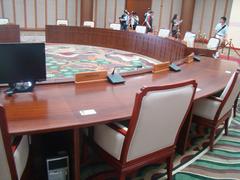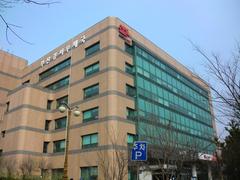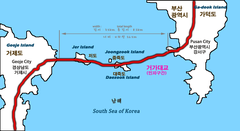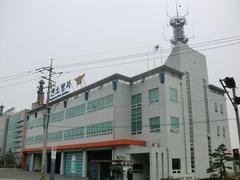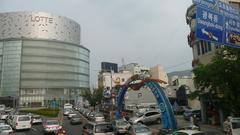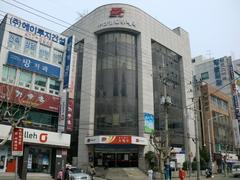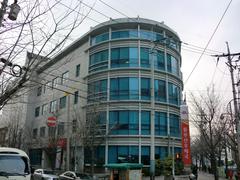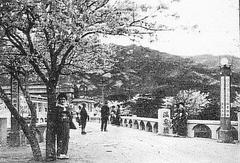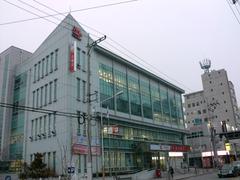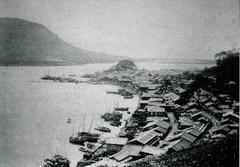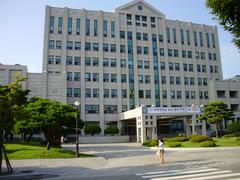Gimhae International Airport Visiting Hours, Tickets, and Travel Guide: Busan Historical Sites
Date: 14/06/2025
Introduction: Gimhae International Airport and Its Importance for Travelers Visiting Busan
Busan, South Korea’s bustling southeastern metropolis, is celebrated for its blend of cutting-edge urbanity and deep-rooted cultural heritage. Gimhae International Airport acts as the primary gateway to this vibrant city, providing essential connectivity for both domestic and international travelers. Operating 24/7, the airport is designed to handle a high volume of passengers efficiently, offering a variety of services and amenities to meet diverse needs. Whether your journey in Busan is just beginning or you are connecting through the city, being familiar with Gimhae International Airport’s operations, facilities, and future developments is key to a smooth travel experience.
Beyond the airport, Busan’s array of historical and cultural sites—such as Busan Tower, Haedong Yonggungsa Temple, and Beomeosa Temple—invite visitors to explore Korea’s rich heritage. Each site stands out for its distinct history, architecture, and visitor experiences, with accessible information on visiting hours, admission, and tours. This guide delivers detailed insights for planning your trip, spotlighting both the airport and Busan’s iconic landmarks, and is complemented by official sources for further exploration (Gimhae International Airport Guide, Busan Tower Official Website, Haedong Yonggungsa Temple Information, Beomeosa Temple Details).
Table of Contents
- Visiting Hours and Ticket Information
- Airport Facilities and Travel Tips
- Getting to and from Gimhae International Airport
- Exploring Busan: Nearby Historical Sites and Attractions
- A Brief History of Gimhae International Airport
- Notable Incidents and Safety Measures
- Looking Ahead: The Gadeokdo New Airport Project
- What This Means for Gimhae International Airport
- Introduction to Busan Tower
- Visiting Haedong Yonggungsa Temple
- Visiting Beomeosa Temple
Welcome to Gimhae International Airport: Your Gateway to Busan
Whether you’re embarking on an adventure to Busan or simply transiting, Gimhae International Airport is central to your travel experience. This guide details everything from operational hours and ticketing to the airport’s history and future, and introduces top Busan attractions and travel advice for a seamless journey.
Visiting Hours and Ticket Information
Gimhae International Airport operates around the clock for passenger arrivals and departures. Most airline counters and services function between 5:00 AM and 11:00 PM. Tickets can be purchased online or directly at the airport’s ticket counters in the main terminal. Advance booking, especially during peak travel periods, is strongly recommended to avoid lines.
Airport Facilities and Travel Tips
Gimhae International Airport provides a wide range of facilities, including:
- Free Wi-Fi
- Luggage storage and lockers
- Currency exchange and banking services
- A variety of restaurants, cafés, and shops
- Accessibility features such as elevators and wheelchair assistance
Photography is generally allowed, but areas near military zones within the airport may have restrictions. Always adhere to posted guidelines for security and safety.
Getting to and from Gimhae International Airport
Travelers can choose from several transportation options:
- Busan-Gimhae Light Rail Transit (BGLRT): Connects the airport with Busan’s city center and major hubs.
- Airport limousine buses and city buses: Provide routes to different city districts.
- Taxis: Readily available outside the terminal.
- Parking: Both short-term and long-term parking are on offer, with clear signage for directions.
Exploring Busan: Nearby Historical Sites and Attractions
After landing, immerse yourself in Busan’s diverse attractions:
- Gamcheon Culture Village: A colorful hillside neighborhood renowned for its artistic murals and panoramic views.
- Jagalchi Fish Market: Korea’s largest seafood market, celebrated for its fresh catches and local fare.
- Haedong Yonggungsa Temple: A rare seaside Buddhist temple with dramatic ocean vistas.
- Busan Tower & Yongdusan Park: Iconic for their sweeping city views and lush parklands.
Allocating time to explore these destinations will significantly enrich your Busan experience.
A Brief History of Gimhae International Airport
Established in August 1976 on Busan’s western edge, Gimhae International Airport initially handled only domestic flights but expanded to international routes in the early 1990s. Notable milestones include the launch of Korean Air’s Honolulu service in 1992 and Lufthansa’s Munich route in 2007. The airport’s growth reflects the increasing demand for global connectivity in the region.
However, the airport is geographically constrained by mountains and urban development, and it shares runways with military operations, limiting expansion opportunities.
Notable Incidents and Safety Measures
The tragic crash of Air China Flight 129 in 2002 highlighted the need for enhanced safety standards at Gimhae International Airport, prompting further investment in safety protocols and infrastructure improvements.
Looking Ahead: The Gadeokdo New Airport Project
To address capacity limitations and safety concerns, a new international airport is under construction on Gadeokdo Island, with an expected opening in 2029. This facility will feature advanced navigation systems, accommodate large aircraft, and integrate seamlessly with regional transport networks, including ferries and railways. The new airport may be named “Yi Sun-sin International Airport” in honor of the famed Korean admiral.
What This Means for Gimhae International Airport
Following the opening of the new airport, Gimhae is expected to focus on domestic flights and specialized aviation services. In the interim, ongoing upgrades aim to improve the passenger experience.
Frequently Asked Questions (FAQ)
Q: What are Gimhae International Airport’s visiting hours?
A: The airport is open 24/7, but specific airline and facility hours are typically 5:00 AM–11:00 PM.
Q: How can I purchase tickets at Gimhae Airport?
A: Tickets are available both online and at airport counters. Advance purchase is recommended.
Q: Are there guided tours or special events at the airport?
A: Regular tours are not offered, but special events may be announced on the airport’s website.
Q: Is the airport accessible for travelers with disabilities?
A: Yes, the airport provides elevators, ramps, and wheelchair assistance.
Q: What are some must-see historical sites near Gimhae Airport?
A: Gamcheon Culture Village, Jagalchi Fish Market, Haedong Yonggungsa Temple, and Busan Tower are top recommendations.
Plan Your Visit
Gimhae International Airport remains a vital entry point to Busan. Stay updated by visiting the official airport website, using the Audiala app for real-time travel updates, and following social media for the latest news and tips (Gimhae International Airport Guide).
Busan Tower: A Symbol of Busan
Historical Significance
Busan Tower, rising 120 meters in Yongdusan Park, has been a symbol of Busan’s modernization since its construction in 1973. Once a radio tower, it now serves as a cultural and tourism icon, hosting events and festivals that celebrate the city’s spirit.
Visitor Information
- Visiting Hours: 10:00 AM–10:00 PM daily (last entry 9:30 PM)
- Ticket Prices:
- Adults (19–64): 8,000 KRW
- Youth (13–18): 6,000 KRW
- Children (7–12): 5,000 KRW
- Seniors (65+): 5,000 KRW
- Children under 6: Free
Tickets can be purchased at the entrance or online (Busan Tower Official Website).
- Facilities: Observation deck with telescopes, souvenir shops, and a café.
Travel Tips
- Visit on clear days for the best views.
- Pair your trip with a stroll in Yongdusan Park.
- The tower is less crowded on weekday mornings.
- Great spot for sunrise and night photography.
Nearby Attractions
- Yongdusan Park: Gardens, statues, and walking trails.
- Jagalchi Fish Market: A short walk away.
- BIFF Square: Lively area with food stalls and cultural activities.
Accessibility
Accessible via Nampo Station (Busan Metro Line 1), a 10-minute walk. The site is wheelchair friendly with ramps and elevators.
FAQ
Q: Are there guided tours?
A: Yes, check the official website for schedules.
Q: Is photography allowed?
A: Yes, except in restricted areas.
Q: Online ticketing?
A: Available via the Busan Tower website.
Q: Is there parking?
A: Limited parking is available near the park.
Visual Highlights
Related Articles
External Links
Haedong Yonggungsa Temple: Seaside Spirituality
History and Cultural Significance
Founded in 1376 by Buddhist teacher Naong Hyegeun during the Goryeo Dynasty, Haedong Yonggungsa Temple is a rare seaside temple dedicated to the sea’s guardian deity. Its unique location on Busan’s northeast coast distinguishes it from mountain temples, symbolizing harmony between nature and spirituality.
Visiting Hours and Tickets
- Hours: 7:00 AM–6:00 PM (April–October: extended to 7:00 PM)
- Admission: Free, with donations appreciated (Haedong Yonggungsa Temple Info)
Getting There and Accessibility
- Location: About 18 km northeast of central Busan.
- Transport: Bus 181 from Haeundae Station; taxis and parking available.
- Accessibility: Some stairs and uneven paths; assistance for those with reduced mobility is available at the entrance.
Guided Tours and Special Events
- Local operators and on-site audio guides offer cultural context and historical insights.
- Major events include Buddha’s Birthday lantern festivals and traditional performances.
Photographic Spots and Visitor Tips
- Capture the seaside Buddha statues, main hall, and rocky shoreline.
- Visit early morning or late afternoon for the best light.
- Wear comfortable shoes; respect temple etiquette.
Nearby Attractions
Enhance your visit with stops at Huinnyeoul Culture Village or the Busan Aquarium.
FAQ
Q: Is there an entrance fee?
A: No, but donations help with upkeep.
Q: Are night visits allowed?
A: No, the temple closes by 6–7 PM.
Q: Are guided tours available?
A: Yes, via tour operators and audio guides.
Q: Is the temple accessible?
A: Assistance is available, but some areas are challenging.
Q: Best time of year to visit?
A: Spring and autumn for mild weather and vibrant scenery.
Beomeosa Temple: Tranquil Mountain Heritage
History and Cultural Significance
Founded in 678 AD by monk Ui Sang, Beomeosa Temple is one of Korea’s oldest and most significant Buddhist temples. It features notable structures like the Daeungjeon Hall (a National Treasure) and continues to host important Buddhist rituals and festivals.
Visiting Information
- Location: 15 km northeast of Busan city center, accessible via Beomeosa Station (Busan Metro Line 1) and shuttle buses.
- Opening Hours: 5:00 AM–7:00 PM, with slight seasonal variation.
- Admission: Free for temple grounds; fees apply for special programs (Beomeosa Temple Details).
Unique Features and Experiences
- Temple Stay Programs: Overnight experiences include meditation, ceremonies, and monastic meals.
- Architectural Highlights: Explore Daeungjeon Hall, Jeokseongdae Pavilion, and the Three-Story Pagoda.
- Seasonal Beauty: Especially scenic during spring blossoms and autumn foliage.
Accessibility and Visitor Services
Paths accommodate visitors with limited mobility, though some areas have stairs. Shuttle buses and information desks are available. Facilities include restrooms, souvenir shops, and snack vendors. Guided tours are offered in multiple languages.
Nearby Attractions
- Geumjeongsan Mountain: Hiking trails and panoramic vistas.
- Haeundae Beach: Popular for its lively atmosphere.
- Jagalchi Fish Market and Gamcheon Culture Village: Both easily reached from Beomeosa.
Practical Travel Tips
- Best Time: Spring and autumn for pleasant weather.
- Transport: Metro Line 1, then shuttle or taxi.
- Dress Code: Modest, comfortable attire.
- Photography: Allowed, but avoid flash in sacred spaces.
FAQ
Q: Is there an entrance fee?
A: General admission is free; special programs require payment.
Q: Can I join a temple stay without a reservation?
A: Advance booking is recommended.
Q: Are guided tours available?
A: Yes, in several languages.
Q: Is Beomeosa accessible?
A: Some accessible pathways, but terrain may be difficult in parts.
Q: When is it least crowded?
A: Early mornings on weekdays.
Summary: Key Information and Tips for Gimhae International Airport Visitors
Gimhae International Airport is the main entry point to Busan, offering 24-hour service, extensive facilities, and efficient transit options. Its historical evolution and future role alongside the new Gadeokdo International Airport highlight its ongoing importance. For the best travel experience, plan ahead, use official resources, and consider guided tours for deeper insights.
Busan’s historical landmarks—Busan Tower, Haedong Yonggungsa Temple, Beomeosa Temple—offer rich cultural experiences with practical visitor amenities and accessible information. Enhance your itinerary by exploring nearby attractions like Gamcheon Culture Village and Jagalchi Fish Market.
Stay informed using verified sources and digital tools such as the Audiala app, ensuring a smooth and enriching visit to Busan (Gimhae International Airport Developments, Busan Tower Visitor Guide, Haedong Yonggungsa Temple Visitor Info, Beomeosa Temple Visitor Guide).
References
- Gimhae International Airport: Visiting Hours, Tickets, History, and Future Developments, 2025 (https://www.gimhaeairport.kr)
- The History and Visitor Guide to Busan Tower: A Must-See Historical Monument in Busan, 2025 (https://busantower.or.kr)
- Visiting Haedong Yonggungsa Temple: Hours, Tickets, and Cultural Insights, 2025 (https://www.visitbusan.net)
- Visiting Beomeosa Temple: History, Tickets, and Travel Tips for Busan’s Historic Landmark, 2025 (https://www.visitbusan.net)

